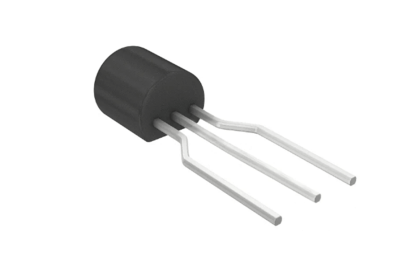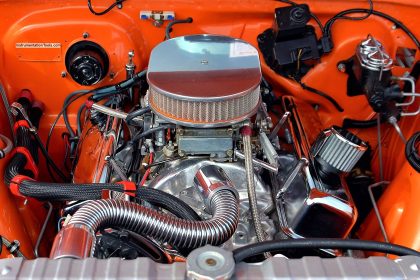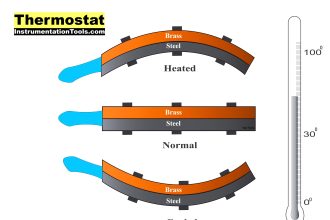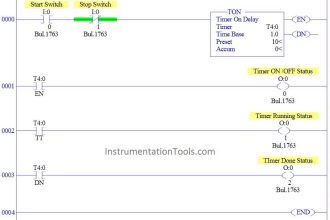In this post, we will learn the various type of chillers used in HVAC.
HVAC is a very vast field and it comprises of many devices. One of the main components in HVAC is a chiller.
Chiller is a refrigerant component which is used to cool the temperature of water, air or evaporation. They are used in many commercial and industrial applications.
Classification of HVAC Chillers
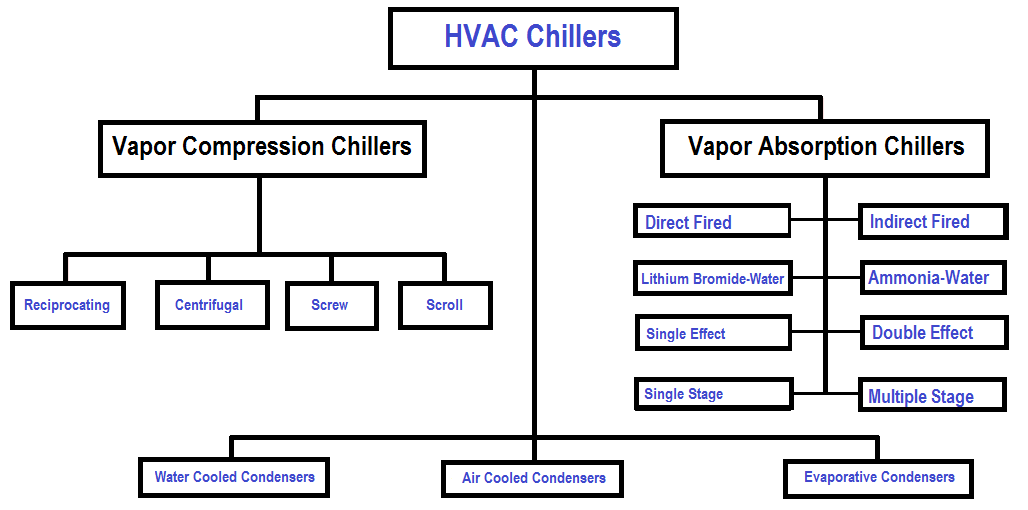
In this post, we will see the various types of chillers used in HVAC.
To understand first of all how a refrigeration cycle works, refer the below link. It will help to then understand the chillers more easily.
Types of Chillers based on Cooling Medium
The chillers are classified into two types based on cooling medium. They are water chillers and air chillers.
Water Chillers
As the name implies, the water chiller uses the water as a condensing medium. In condensers, water from cooling tower is used to condense the hot gas coming from compressor.
The remaining refrigerant cycle remains the same. When the final gas reaches evaporator coils, it does heat exchange with warm medium (water or air) and cools it’s temperature.
Air Chillers
As the name implies, it is a chiller which uses the air as a condensing medium. Condensing fans are used to condense the hot gas coming from compressor.
The remaining refrigerant cycle remains the same. When the final gas reaches evaporator coils, it does heat exchange with warm medium (water or air) and cools it’s temperature.
Types of Chillers based on General Working Principle
The chillers are classified into two types based on working principle. They are vapour compression chillers and vapour absorption chillers.
Vapour Compression Chillers
In the vapour compressor chiller system, a compressor is used to compress the refrigerant gas. The gas is then pushed by the compressor and rotated in the whole circuit.
This means that the vapour is compressed and then rotated in the whole system by the compressor. So, in this chiller, compressor is the integral part.
Vapour Absorption Chillers
Unlike the previous one, the vapour absorption chillers does not use compressor; but instead it uses a heat source to move the refrigerant around the circuit.
The heat source can be hot water or steam. The main components instead of compressor are absorber, pump and generator.
Types of Chillers based on Compressor Technology
The chillers are classified into two types based on compressor technology. They are reciprocating chillers, screw chillers, and centrifugal chillers.

Reciprocating Chillers
The reciprocating chiller has compressor which uses piston for compressing the refrigerant.
Reciprocating compressors are positive displacement machines that use the reciprocating action of a piston inside a cylinder to compress refrigerant. As the piston moves downward, a vacuum is created inside the cylinder.
Due to this, the refrigerant is sucked into the cylinder. After the piston reaches its bottom position it begins to move upward. As the piston continues to move upward it compresses the refrigerant, increasing its pressure.
At a certain point the pressure exerted by the refrigerant forces the exhaust valve to open and the compressed refrigerant flows out of the cylinder. Once the piston reaches it top-most position, it starts moving downward again and the cycle is repeated.
Screw Chillers
This compressor uses two helical rotors which propels and compresses the refrigerant gas. It consists of two mating helical grooved rotors-the male lobes and the female gullies. They are housed in a stationary casing and move simultaneously.
As they rotate, the refrigerant gas is compressed by direct volume reduction between the two rotors, and transformed into vapor.
Centrifugal Chillers
This compressor uses an impeller, which is must like a water pump. This impeller is used to compress the refrigerant.
In this way, we understand the various types of chillers used in HVAC.
